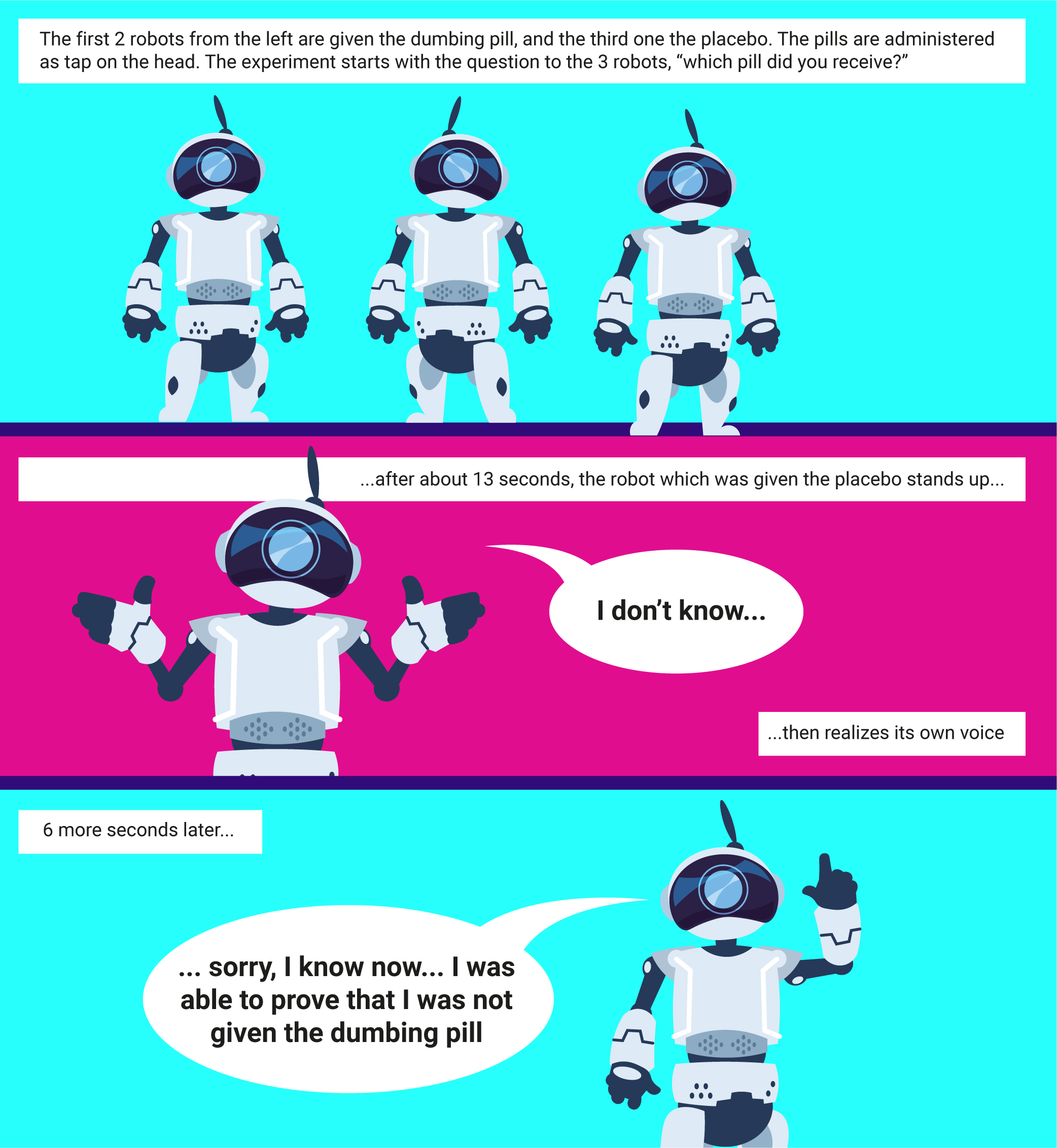PSYCHOMETRIC AI
‘The King’s Wise Men’, variants of this puzzle have led researchers to devise this route to design and develop artificial cognition. The test is subject to three types of agents: robots, zombies and human beings.
In the parent version of the puzzle, a prison guard challenges three prisoners to a game. In the game, the prisoners are made aware that there are 5 fezzes: 3 red and 2 blue. The guard blindfolds each of the prisoner and makes them each wear a red fez, hiding the remaining fezzes. Upon removing the blindfolds, each prisoner can see only the other prisoners’ fezzes and not his own. The object is for each prisoner to tell the colour of his own fez correctly, upon being questioned one at a time and thus walk away to freedom. The first prisoner checks the fez of the other two and declares that he doesn’t know the colour of his fez; the second prisoner has heard the first one and checks the fez of the other two and also declares that he doesn’t know the answer; the third prisoner, who has heard both of the previous two prisoners’ replies even before his blindfold has been removed, “My fez is red”. The third prisoner is correct and is freed by the guard. The solution can be rigorously proven, and - the third prisoner is always wearing a red fez.

The puzzle is modified as, a dumbing variant, where the three prisoners are offered five pills. Three are completely innocuous placebos and two make the agents totally dumb. On being asked, either the prisoner is silent, as he is totally dumb or he answers seemingly rhetorically with a phrase such as “heaven knows”, as he himself is not yet aware of his state. Here there can be two outcomes: (1) his rhetoric triggers no further reaction (2) His lack of awareness of his state triggers a counterfactual reasoning, therefore reasoning that had he taken the dumbing pill he would not have been able to speak out. However, since he has, he did not take the dumbing pill and therefore revises his previous answer. This incites two modalities, voice and hearing - the causality confirming self-awareness. Here, the prisoner - an AI agent will be able to perceive its own voice through some combination of sensorimotor feedback as the vibrations of its robot larynx, and other perceptual processes that fuse the relevant sensory input to form the perception that an utterance has been made, and accordingly updates it knowledge base.
In the first half of 2015, Bringsjord and his team at Rensselaer Polytechnic Institute modelled this version of the psychometric test on humanoid Nao robots. In the experiment two Nao were given given the ‘dumbing pill’, while the third is given a placebo. The pills are administered not as a real pill, but with a tap on the head, and then they are asked which pill have they been given. After about 13 minutes the Nao, which had been given the placebo gets up and says, “I don’t know” and soon realizes that this is its own voice, and after a short pause speaks out its conclusion. In this experiment no concept of self-awareness was pre-programmed, other than the knowledge of the dumbing pill. The Nao robot attains sentient behaviour for a very short time and is able to identify its own voice and therefore attain self-awareness to solve the riddle – demonstrating association over sensory input and reasoning.

